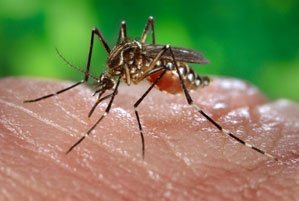Pesticides Used To Control Adult Mosquitoes

Communities seek to control adult mosquitoes to combat an outbreak of mosquito-borne disease or a very heavy, nuisance infestation of mosquitoes. The pesticides we register for this use are known as adulticides. They are applied either by aircraft or on the ground employing truck-mounted sprayers. State and local agencies commonly use the organophosphate insecticides malathion and naled and the synthetic pyrethroid insecticides prallethrin, etofenprox, pyrethrins, permethrin, resmethrin and sumithrin for adult mosquito control.
Mosquito adulticides are applied as ultra-low volume (ULV) sprays. ULV sprayers dispense very fine aerosol droplets that stay aloft and kill flying mosquitoes on contact. ULV applications involve small quantities of pesticide active ingredient in relation to the size of the area treated, typically less than 3 ounces per acre, which minimizes exposure and risks to people and the environment.
Adulticides can be used for public health mosquito control programs without posing risks of concern to the general population or to the environment when applied according to the pesticide label. Our evaluation of mosquito control products includes assuring that use of such products according to label directions does not pose risks to vulnerable populations, including children and pregnant women.
The following fact sheets provide more information on pesticides commonly used in public health mosquito control programs.
Organophosphates
Synthetic Pyrethroids
- Permethrin, Resmethrin, Sumithrin for Mosquito Control
- Prallethrin
- Etofenprox
